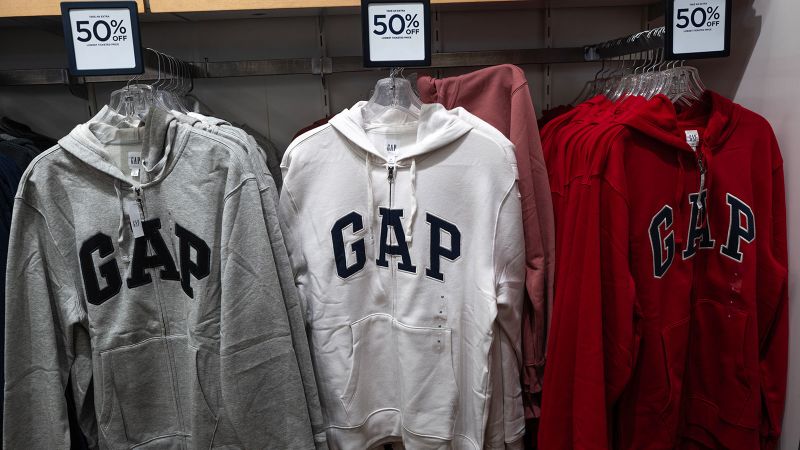The retail landscape is undergoing significant upheaval as tariffs continue to exert pressure on major brands, notably the Gap Inc., which is reeling from the financial implications of these trade policies. On Thursday, Gap disclosed that if President Donald Trump’s proposed tariffs—specifically a 30% tax on imports from China and a 10% tariff on other foreign goods—remain in place for the remainder of the year, it could result in losses ranging from $100 million to $150 million. This paralyzing cost projection reflects the mounting challenges companies face as they navigate the complexities of current trade relations.
The reaction of the financial markets to this news was immediate and severe, with Gap’s stock plunging by 15% during after-hours trading on the same day. This drop illustrates investor concern regarding the potential long-term impacts of these tariffs on the company’s profitability. Adding to the unpredictability, developments surrounding Trump’s tariffs are in flux, complicating the ability of businesses like Gap to formulate effective strategies. Just a day prior to Gap’s announcement, a federal appeals court issued a stay on a ruling from the Court of International Trade that had blocked many of the tariffs instituted by the Trump administration, further clouding the forecast for the retail sector.
Despite this turbulent environment, Gap Inc. is attempting to maintain its momentum. The company, which owns notable brands including Old Navy, Banana Republic, and Athleta, has displayed a commendable sales trend, as evidenced by a 2% increase in same-store sales during the previous quarter—the fifth consecutive quarter of growth in this metric. However, the looming threat of tariffs casts a shadow over this otherwise strong recovery.
In an effort to assuage fears regarding the financial impact of tariffs, Gap’s CEO Richard Dickson conveyed his stance in an interview with CNBC, stating that the company does not plan to impose significant price increases as a direct consequence of the tariffs. “Based on what we know today, we do not expect there to be meaningful price increases or impact to our consumer,” Dickson asserted, suggesting a commitment to preserving customer affordability, despite the challenging trade climate.
While Gap’s leadership is hesitant to increase prices broadly, other companies in the retail sector appear to be adopting a different approach. Various brands and retailers have announced plans to raise prices on select items as a response to the additional costs imposed by tariffs. For instance, Macy’s CEO Tony Spring indicated that the company would implement “selective price increases in selective brands and selective categories,” emphasizing the importance of maintaining consumer value in the face of these economic pressures.
Major retail players such as Walmart, Home Depot, and Target have also voiced intentions to raise prices in order to cushion the financial blows dealt by the tariffs. This collective industry response underscores the widespread apprehension among retailers that the incessant rise in import costs could undermine profitability and diminish customer loyalty.
In conclusion, the ongoing debate surrounding tariffs and their consequences for the retail sector continues to evolve rapidly. As Gap Inc. grapples with foreseeable losses, the company’s efforts to avoid raising prices reflect a strategic approach aimed at preserving its consumer base. However, as competitors make adjustments and increase prices selectively, retailers face the delicate task of balancing cost pressures against the imperative to provide attractive pricing to their customers in a challenging economic landscape. The outcome of these developments not only affects individual companies but speaks to the broader dynamics of trade, consumer behavior, and market resilience in a time of uncertainty.



